Introduction
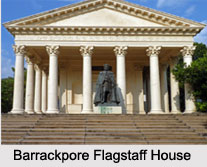 Barrackpore which is also known as Barrackpur is the prime location of the one and only Military Cantonment and Police Training Academy in West Bengal. From the rule of British East India Company and the British Empire in India, Barrackpur shares the medieval and modern past to the contemporary people.
Barrackpore which is also known as Barrackpur is the prime location of the one and only Military Cantonment and Police Training Academy in West Bengal. From the rule of British East India Company and the British Empire in India, Barrackpur shares the medieval and modern past to the contemporary people.
Naming of Barrackpur : Barrackpur got its name as it was the site of the first cantonment of the British East India Company. Ain-i-Akbari suggested that the name comes from "Barbakpur", while Bipradas Pipilai referred this place as Chanak.
History of Barrackpur
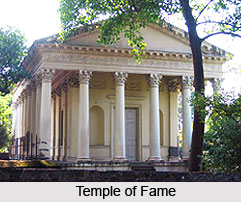 History of Barrackpur deals not only with the British rule but also the reference of this place was found in the annals of 1st Century BC. Not only that, the history of this military town in West Bengal eye witnessed the Sepoy Mutiny in 1857.
History of Barrackpur deals not only with the British rule but also the reference of this place was found in the annals of 1st Century BC. Not only that, the history of this military town in West Bengal eye witnessed the Sepoy Mutiny in 1857.
Early History of Barrackpur : Early History of Barrackpore states the port city in the writings of the Greek navigators, geographers, chronicles and historians of the 1st century BC to the 3rd century AD. These authors generally referred to the country of people variously called the Gangaridae, Gangaridai and Gandaritai.
Medieval History of Barrackpur : Medieval History of Barrackpur is recorded in 15th and 16th centuries AD. In the middle ages, Barrackpur was named as "Chanak". At that time, "Chanak" and the other towns in the region had become populous river towns. W.W. Hunter in the later half of the middle age mentioned that the towns and villages of this subdivision on the banks of the Hooghly river as chief trading and marketing centres. Along with the Barrackpur, the Middle Ages port towns are Baranagar, Dakhineswar, Agarpara, Panihati, Sukchar- Khardah, Barrackpur, Nawabganj, Ichapore, Shyam Nagar, Naihati and Halisahar.
Under the Mughal Empire, Bengal was divided into Circars, or administrative subunits, each of which was ruled over by a Mahal. The name "Barbuckpur", another name for Barrackpore, is associated with a Mahal in the Ain-e-Akbari. 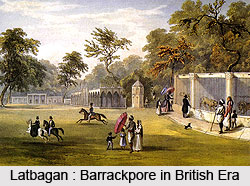 From the 17th century, the area of Barrackpore was ruled over by a line of Zamindars from the Nona Chandanpukur of Barrackpore.
From the 17th century, the area of Barrackpore was ruled over by a line of Zamindars from the Nona Chandanpukur of Barrackpore.
Modern History of Barrackpur : The first British barrack or cantonment in India was built in the town in the year 1772. It was the first military base in Barrackpur. After the British crown assumed direct control of India, the sprawling Government House and the Government Estate were built in Barrackpore to provide the Viceroy with a suburban residence 15 miles outside of Kolkata. The two rebellions against British East Indian Company took place in Barrackpore in the 19th century. The first of these was in the year 1824, which is led by Sepoy Binda Tiwary. In this Speoy Rebellion, the mostly high-caste Hindu 47th Bengal Native Infantry refused to board boats to cross the polluted "dark waters" to Burma (Myanmar) in the First Anglo-Burmese War. Consequently, British-manned artillery fired upon and "erased" them. In the year 1857, Barrackpore or Barrackpur was the scene of Indian rebellion of 1857. Mangal Pandey attacked his British commander, and was subsequently court-marshalled. His regiment was disbanded, an action which offended a number of sepoys and is considered to have contributed to the anger that fuelled the rebellion. In order to commemorate his sacrifice, a park named "Sahid Mangal Pandey Udyan" was opened in the serenity of Hoogly River. The Army cantonment of Barrackpore or Barrackpur also houses another significant historical landscape called the RCTC area, now populated by the defence quarter.
Geography of Barrackpur
The latitudinal and longitudinal limit is 22.76 degree North to 88.37 degree East. Barrackpur is located in the Ganga River-Brahmaputra River delta region. This region is located in the North 24 Parganas district of West Bengal. The average elevation of Barrackpur is 15 metres. Barrackpur is positioned on the eastern bank of the Ganga.
Demography of Barrackpur
According to Population Census in the year 2011, Barrackpur had a population of 144,331. The men constitute 53 percent while the female consists of 47 percent.
Education of Barrackpur
Ramakrishna Vivekananda Mission School, Barrackpore Rastraguru Surendranath College, Mahadevananda Mahavidyalaya, St. Mary`s Technical Campus, Adamas International School, Douglas Memorial Higher Secondary School, Army Public School Barrackpore, Kendriya Vidyalaya Barrackpore Army are the popular educational hubs there.
Economy of Barrackpur
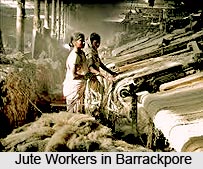 Economy of Barrackpur is the pillar of the North 24 Parganas District. From British times, Barrackpur was a well developed place for jute industries. Barrackpur is also the place of cantonment town under Barrackpore subdivision in North 24 Parganas district in the state of West Bengal. Barrackpore is one of the most developed regions in West Bengal. The literacy rate in the sub-division is above the average standard of the state and district.
Economy of Barrackpur is the pillar of the North 24 Parganas District. From British times, Barrackpur was a well developed place for jute industries. Barrackpur is also the place of cantonment town under Barrackpore subdivision in North 24 Parganas district in the state of West Bengal. Barrackpore is one of the most developed regions in West Bengal. The literacy rate in the sub-division is above the average standard of the state and district.
Accessibility to Barrackpur
The subdivision of Barrackpur is served by road, rail and air transport. It benefits from the Hooghly River, which flows through the western part of this subdivision.
Presence of Ganga River
The presence of Ganga River aided the establishment of a large number of industries on its banks early in India`s industrial development, including jute, engineering, paper, and cotton mills.
Cottage Industry in Barrackpur
Barrackpur or Barrackpore also conventionally had a strong small scale cottage industry and handicraft sector. It consists of jute industrial associate belt, Floriculture, pisciculture and horticulture.
Agriculture in Barrackpur
The Army Air Force cantonment is the biggest landscape of the town of Barrackpore, while their agriculture is the main base of the subdivision`s economy, producing a variety of crops.
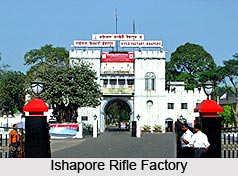 Central Inland Fisheries Research Institute has been established at Barrackpore to endorse production of fishes mainly in ponds and rivers. A well-developed irrigation system has been constructed in the subdivision to promote agriculture. Low interest loans have also been used to encourage the expansion of farming and the development of agricultural infrastructure.
Central Inland Fisheries Research Institute has been established at Barrackpore to endorse production of fishes mainly in ponds and rivers. A well-developed irrigation system has been constructed in the subdivision to promote agriculture. Low interest loans have also been used to encourage the expansion of farming and the development of agricultural infrastructure.
Primary Industry in Barrackpur
The primary industry in Barrackpur is jute processing, centered in a number of jute mills on the side of the river.
Ishapore Rifle Factory
Ishapore Rifle Factory is one of the most important arms factories of India, supplying the requirements of the security forces.
Mulazore Thermal Power Plant
Mulazore Thermal Power Plant at Shyamnagar was one of the oldest power plants in India. It was shut down in the year 2004. The dry cells are produced by Exide and cables produced by Nicco are other industrial products.
Palta Water Works
Barrackpore or Barrackpur is also famous for Palta Water Works, its oldest water treatment plant, in the banks of Hooghly River. The plant was constructed from 1864 to 1870, and is situated on 480 acres of land. It was the first intake point for generation and supply of water and lately due to high demand of water. The Kolkata Municipal Corporation has commissioned the Indira Gandhi Water Treatment Plant near the same locality to augment the capacity of supply of water to Tallah.
Culture in Barrackpur
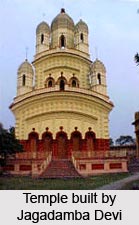 Culture in Barrackpur expresses the orthodox cultural assignment of the Bengali culture.
Barrackpore or Barrackpur was abode to a number of significant members of the Indian independence movement, many of whom have memorials in the subdivision.
Culture in Barrackpur expresses the orthodox cultural assignment of the Bengali culture.
Barrackpore or Barrackpur was abode to a number of significant members of the Indian independence movement, many of whom have memorials in the subdivision.
House of Rastraguru Sruendranath Bannerjee
Barrackpur or Barrackpore is the house of Rastraguru Surendra Nath Bandyopadhyay, who was called the father of Indian Nationalist Movement, who lived in Barrackpore. The house of Surendranath Banerjee at Monirampur of Barrackpore has been converted into the Rastraguru Surendranath Institute and Netaji Open University.
House of Bharat Chandra Roy Gunakar
The famous Bengali author Bharatchandra Ray was known for writing Annada Mangal in the medieval period. It is one of the golden treasures of medieval Bengali literature. The author of Ananda Mangal lived at Mulajore.
Other notable people in Barrackpur
Other notable people in Bengali medieval literature are Ramprasad Sen, Bankim Chandra Chattopadhaya and Shekar Ghosh who contributed more in Bengal medieval and modern literature. Ramprasad Sen who authored many religious songs was born at Halisahar in this subdivision. Bankim Chandra Chatterjee, who was the author of national song of India "Vande Mataram", was born at Naihati in Barrackpore subdivision. The Gallantry Award winner Army Captain Shekhar Ghosh is also from Barrackpore, West Bengal.
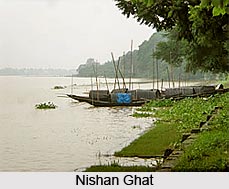
Medieval Culture in Barrackpur
The towns of Panihati and Khardaha are known for having been visited by Chaitanya Mahaprabhu and Nityananda Prabhu in the medieval era, some 500 years ago. The annual festivals and melas are held at these places and draw large numbers of devotees.
Modern Culture in Barrackpur
The later visitors of Barrackpur included Sri Ramakrishna Paramahansa, Rabindranath Tagore, and Mahatma Gandhi. Gandhi Ghat, which is famous for Mahatma Gandhi is located on the east bank of the Hooghly River. The Gandhi Museum nearby has a rare collection of books and articles that are used by Mahatma Gandhi.
Popular Culture in Barrackpur
Sukanta Sadan Theatre Hall is named after the revolutionary poet Sukanta Bhattacharya. This Sukanta Sadan Theatre Hall is located in the main town. There are many cinema halls in Barrackpore and its adjacent localities. A new multiplex, Jayanti Cinema, has opened. Sahid Mangal Pandey Uddan of Nishan Ghat faces the Ganga River at Barrackpore.
Festivals in Barrackpur
The Bengali festivals such as Durga Puja, Kali Puja, Bhai Duj are celebrated every year. There is a month-long fair each December to January (Bengali month of Poushya) at the temple of the Goddess Kali at Shyamnagar on the bank of the Ganga River.
Monuments in Barrackpur
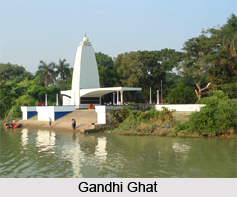 Monuments in Barrackpur comprise of some of the major constructions during the British rule in India. Once served as the summer residence of the British Governors-General, Barrackpur is situated at a distance of twenty four kilometers to the north of Kolkata, on the banks of the River Hooghly, opposite to the former Danish colony of Serampore. Barrackpur was established in the form of a cantonment in the year 1775, and quickly became one of the prominent places in India. The layout is typical, with broad avenues of detached bungalows, each set in its own garden compound. Some of the bungalows are original and there are a variety of attractive neo-classical styles.
Monuments in Barrackpur comprise of some of the major constructions during the British rule in India. Once served as the summer residence of the British Governors-General, Barrackpur is situated at a distance of twenty four kilometers to the north of Kolkata, on the banks of the River Hooghly, opposite to the former Danish colony of Serampore. Barrackpur was established in the form of a cantonment in the year 1775, and quickly became one of the prominent places in India. The layout is typical, with broad avenues of detached bungalows, each set in its own garden compound. Some of the bungalows are original and there are a variety of attractive neo-classical styles.
Marquess Wellesley, the elder brother of the Duke of Wellington, started to construct a summer retreat here, but the same was never completed. The long avenue of mature trees lining the road from Kolkata is the only vestige of Wellesley`s original grandiose vision of a continuous processional route from the city. There are a number of interesting monuments and buildings, but access is restricted. The Government House was planned by Captain Thomas Anbury in the year 1813. The main north faqade is enriched with an octa-style Tuscan entrance portico and shallow pediment. Colonnaded verandahs enclose the other three sides. The house was never spacious. Guests were provided accommodation in a series of bungalows dispersed around the park. It is now a police hospital and the large first-floor drawing-room is a typhoid ward. Once the greatest delight was its setting by the Hooghly River, but the beautiful setting of the landscaped gardens are now sadly overgrown and the building is dilapidated. An exotic menagerie was constructed here in the 1820s, but no trace now remains of the neo-classical pavilions and Gothic aviaries which Bishop Heber came across. The marble fountain and basin situated in close proximity to the house once formed part of the Mughal baths at Agra and were imported by Lord Warren Hastings. A number of other interesting monuments also remain there.
The Temple of Fame, constructed by Captain George Rodney Blanc is located between the main house and Commander-in-Chief`s bungalow. It looks like an elegant Greek temple, embellished with hexastyle Corinthian porticos at each end and colonnades to the flanks. It was constructed by the Earl of Minto to commemorate the soldiers who fell in the conquest of Mauritius and Java from the year 1810 and 1811. The memorial chamber is a simple barrel vault with four black commemorative plaques and an inscription over the entrance. A later tablet erected in the year 1843, memorializes the Gwalior Campaign. Around the building are discarded statues of King George V, Peel, Minto, Mayo, Lansdowne, Roberts, Woodburn and Napier of Magdala, relocated here by the Kolkata authorities.
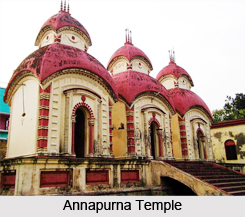 The Grave of Lady Canning is another monument of importance which can be seen while on a tour of Barrackpur. Lady Charlotte Canning died of fever at Barrackpur on the 18th of November 1861. She was interred beside the River Hooghly in the gardens which she did so much to enhance its beauty. Her grave is located in a small enclosure, with iron-work designed from the intertwined initials of her name, C. C. The distinctive memorial, crowned by the Cross of St Andrew, is a replica; the original, by George Gilbert Scott, was relocated to the north portico of St John`s Church, Kolkata. In a touching gesture the equestrian statue of her husband, Lord Canning, was moved here from Kolkata after independence and placed beside her grave. Close to it is the famous banyan tree, from which the first sepoy mutineer, Mangal Pandey, was hanged in the month of March, 1857.
The Grave of Lady Canning is another monument of importance which can be seen while on a tour of Barrackpur. Lady Charlotte Canning died of fever at Barrackpur on the 18th of November 1861. She was interred beside the River Hooghly in the gardens which she did so much to enhance its beauty. Her grave is located in a small enclosure, with iron-work designed from the intertwined initials of her name, C. C. The distinctive memorial, crowned by the Cross of St Andrew, is a replica; the original, by George Gilbert Scott, was relocated to the north portico of St John`s Church, Kolkata. In a touching gesture the equestrian statue of her husband, Lord Canning, was moved here from Kolkata after independence and placed beside her grave. Close to it is the famous banyan tree, from which the first sepoy mutineer, Mangal Pandey, was hanged in the month of March, 1857.
Semaphore Tower is located immediately adjacent to the former Flagstaff Bungalow. It is a local landmark, an old circular semaphore tower, crowned by a small ball, one of a chain of signal stations which was previously used for communicating rapidly up river before the advent of the electric telegraph. A number of Staff Bungalows were constructed in the year 1863. To the west of Government House is the Flagstaff Bungalow, originally occupied by the Private Secretary and later by the Commander-in-Chief. To the north arc three other bungalows of a similar date and style, which replaced some earlier `Swiss Cottages`, are present. In the grounds of the bungalow once occupied by Lord Kitchener is a garden memorial to the horse Myall King, three times winner of the Calcutta Cup, who died dramatically on the Kolkata racecourse in the year 1893. The Parade Ground at Barrackpur is well-known as the first scene in the terrible chapter of the Sepoy Mutiny in the year 1857. The mutinous 19th Regiment was disbanded here and ten days later, on 29th March, the rebellious Mangal Pande ran amok.
Situated in close proximity to the Parade Ground is St Bartholomew`s Church, opened in the year 1831, consecrated in the year 1847, and altered in 1868, when the tower, chancel, verandahs and western porch were added in a crude classical style reminiscent of Soanc`s primitivist order. The font in the transept was the gift of Lord Ellenborough. Several other interesting monuments, including one to Major Arthur William Fitzroy Somerset, who laid down his life in the Sikh War of 1845, and another to Frederick Sherwood Taylor, who was `overwhelmed` by the dreadful landslip at Naini Tal in the year 1880. The Old Cemetery in Barrackpur possesses a large number of military graves.
A witness to one of the gripping historical outbreaks of the Sepoy Mutiny of 1857, Barrackpur offers a number of historical monuments. The renowned outbreak of 1857 originated in this place. This single event made Barrackpur known all over the world. Apart from its association with the Sepoy Mutiny, Barrackpur also possesses various other historical monuments which attract people throughout the year. Some of the places of interest in Barrackpur include the Gandhi Ghat, Adyapith Mandir, Gandhi Museum, Udyan Bati, Mandir of Hanumana, Nand Kishore Temple, Lat Bagan, Annapurna Temple, Mandir of Laxmi Narayan, Prem Chand Sata Barshiki Bhawan, etc.
Tourism of Barrackpur
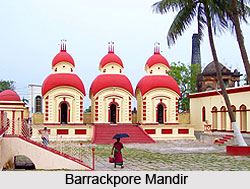 Tourism of Barrackpur includes the pilgrimage tourism sites, leisure tourism sites and nature tourism sites. Some of the tourist places of prime importance like Barrackpur Temple, Tower of Fame, Lady Canning"s tomb, Mangal Pandey Garden and many other places. One can visit an 18th century cantonment, old churches and innumerable footprints of British legacy which makes this place a historical treasure trove.
Tourism of Barrackpur includes the pilgrimage tourism sites, leisure tourism sites and nature tourism sites. Some of the tourist places of prime importance like Barrackpur Temple, Tower of Fame, Lady Canning"s tomb, Mangal Pandey Garden and many other places. One can visit an 18th century cantonment, old churches and innumerable footprints of British legacy which makes this place a historical treasure trove.
Barrackpore or Barrackpur is only an industrial town in West Bengal located in North 24 Parganas. Barrackpore is also a getaway destination in weekend.
Barrackpore Temple
Barrackpore Temple is one of the ancient temples in Barrackpore. Barrackpore Temple was inaugurated on April 12, 1875, just 20 years after Dakshineswar. Ramakrishna Paramhansa was present at the ceremony.
Millitary Barrack in Barrackpore
In the year 1772, the first military barrack of Indian and the East India as well was set up by the British East India Company in Barrackpore, which was till then known as Chanak. Barrackpore soon became an important base for the British East India Company, as the Dutch East India Company settled in Chinsurah and the French East India Company in Chandernagore settled along the Hooghly River.
Summer Palace of Lord Wellesley
The importance of the military town of Barrackpore grew when Lord Wellesley made it the summer retreat for British officials posted in Calcutta (Kolkata). He was so much in love with the river that he donated Rs 1,000 for the construction of a Danish Church at Serampore, on the other bank which is now in Howrah District of West Bengal. Till the year 1829, all rulers of India, including Lord Warren Hastings, Lord Auckland, Lord Minto and Lord Lytton, spent their summers at the luxurious Raj Bhavan in Barrackpore.
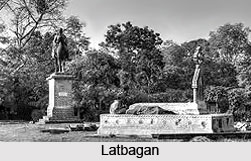
Mangal Pandey Garden
Barrackpur came in the lime light of Indian modern history on March 29, 1857, when a young soldier of Bengal Infantry, named Mangal Pandey, rose in revolt against his British East India Company in Eastern India. The tree from which Mangal Pandey and another sepoy named Ishwari Pandey were hanged can still be seen in Latbagan. A small memorial has been built near the spot.
Navratna Annapurna Temple
Barrackpore houses a Navratna Annapurna temple that is a replica of the Dakshineswar temple. Both temples were built by the family member of Rani Rashmoni. There are six small Shiva temples on the western side of the Annapurna temple, which is accessible through a huge gate with a lion`s statue on top.
Gandhighat
Close to the Nava Ratna Temple, there is Gandhighat located. It is perhaps the most popular tourist stop in Barrackpore. A white monument in the memory of Mahatma Gandhi is the main attraction at this landmark by the Hooghly River. A Gandhi museum was opened here in 1966.
Temple of Fame
Temple of Fame is another must-visit site in Barrackpore. It was built by Lord Minto in memory of British soldiers who died during the conquest of Java and Mauritius in the early 19th century. This elegant Greek temple was designed by GR Blane and bears similarities with Isle de France.
Latbagan
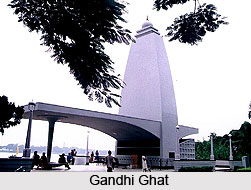 Latbagan is a famous place in Barrackpore. Latbagan has the small but beautiful grave of Lady Canning. She loved Barrackpore so much that she wished to be buried here. A few yards away, there is a statue of Lord Canning. Latbagan became a veritable storehouse of wonderful sculptures. Latbagan had the first zoo in Bengal during British era. It was later shifted to Alipore and named as the Alipur Zoo.
Latbagan is a famous place in Barrackpore. Latbagan has the small but beautiful grave of Lady Canning. She loved Barrackpore so much that she wished to be buried here. A few yards away, there is a statue of Lord Canning. Latbagan became a veritable storehouse of wonderful sculptures. Latbagan had the first zoo in Bengal during British era. It was later shifted to Alipore and named as the Alipur Zoo.
Barrackpore was once the home of the 250-year-old giant Galapagos tortoise that is now housed in Calcutta zoo. It was brought to Barrackpore by Lord Wellesley in the year 1800 and was moved in 1875. A 240-year-old banyan tree is yet another attraction of Latbagan.
St Bartholomew Cathedral
St Bartholomew Cathedral was built in the year 1831, and St Joseph Church was built in 1856. The bell tower at St Joseph Church adds the grandeur to the simple place of worship.
Barrackpur Cantonment is a cantonment town located in the North 24 Parganas district of West Bengal. The district is included under the Barrackpore subdivision. This is a part of the Kolkata Urban Agglomeration. Barrackpur Cantonment is the oldest cantonment of India. The subdivision has 16 municipalities and 24 census towns.
Geography of Barrackpur Cantonment : Barrackpur Cantonment is encompassed by North Barrackpur on the north, Barrackpore on the east and south, and the Hooghly on the west.
Population of Barrackpur Cantonment : According to the 2001 India census, Barrackpur Cantonment has a population of 22,014. Males make up 55% of the population and females amount to 45%. Barrackpur Cantonment has a mean literacy rate of 80%, higher than the nationwide standard of 59.5%. 59% of the males and 41% of the females are literate. 9% of the population is children less than 6 years of age. 96% of the population of Barrackpore subdivision lives in urban areas. In 2011, it had a density of population of 10,967 per square km.
Visiting Information
Barrackpur is connected with all the major cities in West Bengal. This city is connected with Kolkata through roadways and railways. Regular trains are available from Sealdah to reach there which connects Bongaon, Bandel and other cities of West Bengal. B.T. Road is the oldest metal road in India that connects Barrackpore to Kolkata.



















